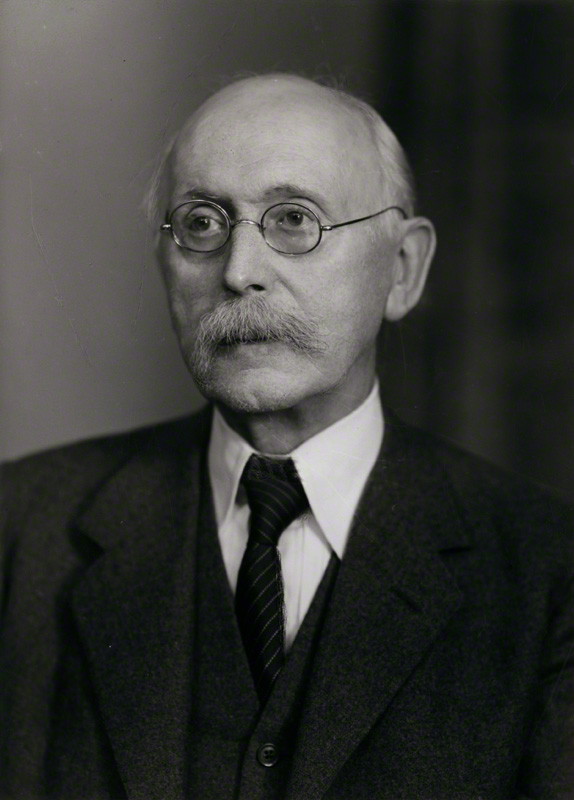Arthur Bowley was appointed Professor of Statistics at LSE in 1915, writes Archivist Sue Donnelly. A pioneering practitioner of statistics across the social sciences, he was highly regarded by government statisticians and used as an expert advisor.
Arthur Bowley was born in Bristol in 1869. Aged two when his father James Bowley died he was brought up by his mother, Maria Johnson, and a supportive extended family. In 1879 he entered Christ’s Hospital eventually specialising in mathematics and receiving annual prizes. In 1888 went to Trinity College Cambridge with a scholarship in mathematics, apparently destined to be a mathematics teacher. Bowley’s burgeoning interest in social conditions – reading Fabian Society pamphlets and subscribing to the Economic Journal – encouraged his interest in the developing discipline of statistics.

Arthur Bowley at LSE
In 1892 Bowley began working as a school master and in 1895 he received the Guy Silver Medal for his first paper to the Royal Statistical Society on wages in the United Kingdom. The paper brought him to the attention of Sidney Webb who was keen to include statistics in the LSE curriculum. Bowley appears in the first LSE prospectus and used his Wednesday afternoon half-holiday to deliver a lecture at 5.45pm, returning to the school in Leatherhead for his supper. In fine weather he would cycle both ways via Epsom, Clapham Common and Westminster Bridge.
His lectures were attended by a small number of civil servants and advanced students – most of them older than Bowley. The Wednesday statistics class was to continue for 30 years. His daughter Agatha admitted that he was not always a great lecturer:
There was perhaps a tendency for Bowley’s lectures to develop on occasion into a confidential monologue addressed to the blackboard as he chalked up line after line of formulae.
Reading and a wedding
In 1900 Bowley applied and obtained a post at Reading College (now Reading University) as a mathematical lecturer. He taught at Reading until 1913, continuing to teach at LSE. Here he met his wife, Julia Hilliam, a talented woodcarver who also taught at Reading College. She was unwilling to give up a promising career for marriage but Bowley argued:
We will labour truly for the commonweal … I propose no unequal match where you should be merged in my work, though I hope you will inspire it. But where we should both be cultivating such talents as we may have, and cheering and helping each other. I at least, certainly need this support.
They married at St George’s Church, Reading in March 1904 and had three daughters. Neither Arthur nor Julia Bowley ever learnt to drive favouring the bicycle over other forms of transport. In 1884 Arthur and his brother Frank bought a second hand tricycle, later upgrading to a safety bicycle with cushion tyres which cost £4 10s. In July 1888 Frank and Arthur explored Devon covering 235 miles on their bikes. Cycling holidays continued with a young family, often accompanied by the economist Edwin Cannan, who was known to provide the children with a helpful push up the hills.
A pioneering practitioner of statistics
In 1908 Bowley was appointed part time Reader in Statistics and in 1915 became part time Professor of Statistics and also worked for the War Trade Statistical Department in the Ministry of Munitions. After the war, in 1919, the University of London created the full time post of Professor Statistics tenable at LSE. The post had a salary of £1,000 and was supported by a research assistant on a salary of £150-£200 per annum.
Bowley was a pioneering practitioner of statistics across the social sciences, highly regarded by government statisticians and used as an expert advisor. He sat on the 1918 Working Classes Cost of Living Committee and advised on the 1920 Inquiry into Dockers Wages. His 1901 book Elements of Statistics, which went through six editions, is considered the first statistics textbook. Bowley was a pioneer in developing sampling techniques and applying them to social studies.
First tested in his survey of working class households in Northampton, Warrington, Stanley and Reading, and published in Livelihood and Poverty with A R Burnett Hurst in 1915, the work was continued in developing the London wide survey of working class households as part of the New Survey of London. Bowley’s innovation was to fully explain the sampling methods used and formulate the precision of the results and possible sources of error.
When the London and Cambridge Economic Service started in 1923 to provide economic information for businesses in a simple and useful format, Bowley was the first editor and developed techniques to present economic information, particularly in graphical form.
Retirement and World War II
Bowley’s retirement was marked by a subscription for a student scholarship in statistics and a portrait of Bowley by the Australian artist Stella Bowen. Today the portrait hangs in the Statistics Library. During World War II Bowley came out of retirement to act as Director of the Oxford Institute of Statistics. On his death in 1957 the LSE Director Sydney Caine, a former student of Arthur Bowley, wrote to Julia Bowley:
He was, I believe, the last survivor of the original group of teachers at the School, and in the memories of many of the older members of the staff he held a firm place as one of the outstanding figures among the teachers of their student days or subsequently as a colleague.

This post was published during LSE’s 120th anniversary celebrations




